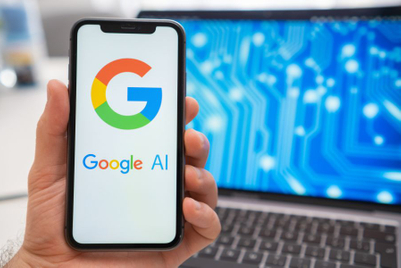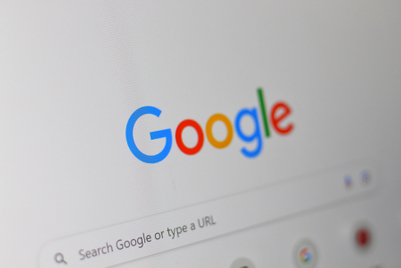
Google is so much a part of the marketing world that it’s sometimes easy to forget it’s a brand in its own right. For the final part of our Creativity in Japan series, Miki Iwamura explains how she has helped build and maintain it as one of the strongest properties in Japan.
Iwamura has spent nearly a decade at Google and today serves as managing director of brand and marketing for Asia-Pacific as well as chief marketing officer for Japan. A graduate of Tokyo University and Stanford, Iwamura has also spent time at Richemont and Dentsu.
She has two main aims: making Google’s technology relatable and appealing to everyday people, and giving marketers at companies big and small a compelling reason to use that technology to build their own brands.
Much of the work Iwamura champions for Google is experiential or utility-based, and sometimes seeks to bring about social change. A recent project she led is ‘Women Will’, designed to enable women to fulfill their ambitions and dreams through technology. Over 60 percent of women in Japan leave the workforce after having a child; the initiative aims to reduce that figure by helping women work 'smart' rather than 'hard'. An offshoot of this was the #HappyBacktoWork campaign, which was supported by more than 700 organisations last year and continued into 2016, with companies offering products and services to support working mothers.
As a marketer, what is your creative approach to building the Google brand in Japan?
Connecting consumers with a strong bond means product experience, not just product specification. As our products are technology-oriented, we need to start with users and tie everything back to user insights so people can really see what the products do to make their lives better. So we always start with the user's story, rather than using a celebrity just to get attention. It needs to be authentic. The important thing is that people think Google is all about technology, but at its base is the belief that we can make people’s lives better with technology, so we always want this principle to come across in our storytelling.
In Japan, a good amount of Google’s branding is offline. Why?
I joined Google nine years ago, when our brand was irrelevant. We had to make it part of people’s lives. That’s why we started using TV as well as video as a format to tell our story. Japan was the first country to run a search campaign on TV. Compared to a market like the US, people here still walk around a lot, so it makes sense to have something there to inspire them. That’s why out-of-home is still so important. But digital is the majority of our budget and mobile is the majority of digital.
How do you work with agencies?
We always call them partners, not vendors—that describes how we work with them. Even for user videos we work with agencies. They play a key role in coming up with ideas together with the team. We share goals and every quarter do a business review and discuss how we’re tracking against that goal. Giving a brief and getting a proposal doesn’t work if you want to have innovative work.
So one thing we do is ‘brand hacking’. The team sits down with an agency for two to three days and they do concept creation and prototyping together. We want to see big ideas that can span digital, TV and out-of-home media—that’s why we came up with this approach to really work as a brand team.
A recent outcome of this was a New Year campaign where we got users to tell us their New Year’s resolutions; we replied by wishing them luck and showing them areas in which we could help them. We also have an innovation budget. When you have many campaigns to run, you tend to do repetitive things and this allows us to do some crazy stuff, like the choir of Android devices, which started in Japan and went global. It’s very important for agencies to be excited so they want to work with us.
How do you evaluate your creative work?
We always have a sense of how something is working through what people talk about online. Once we start noticing one piece of creative is working better, we put more budget behind that. Digital gives you the luxury of improving performance during the campaign. We also use a single-source panel so we can really see creative exposure and behaviour change together. Good creative should drive results. We don’t want creative that’s just hype for getting the attention of users.
Beyond agencies, where do you look for creative inspiration?
We always look at what YouTubers are doing in terms of creating content and get inspiration from them. But engineers within Google are also a great source of inspiration. They are brilliant people and if we bring a marketing challenge to the table they can offer a very different point of view.
What is your view on the overall state of creativity in Japan in 2016?
There’s so much creativity in Japan, and my personal desire is to showcase it to the world. The majority of effort is still going into TV but we’ve started noticing change. I have a huge hope that Japan can really lead with mobile. I don’t see TV losing ground but I do see more incremental time spent on mobile. I want to see more mobile-based creativity and online-to-offline creativity and capturing micro-moments.
This article was first published in Japanese on Campaignjapan.com.
Creativity in Japan is a series by David Blecken and Barry Lustig, managing partner of Cormorant Group, that examines the market's changing creative landscape.


.jpg&h=334&w=500&q=100&v=20250320&c=1)

.jpg&h=334&w=500&q=100&v=20250320&c=1)

.jpg&h=334&w=500&q=100&v=20250320&c=1)



.png&h=334&w=500&q=100&v=20250320&c=1)



.jpg&h=268&w=401&q=100&v=20250320&c=1)



.png&h=268&w=401&q=100&v=20250320&c=1)
